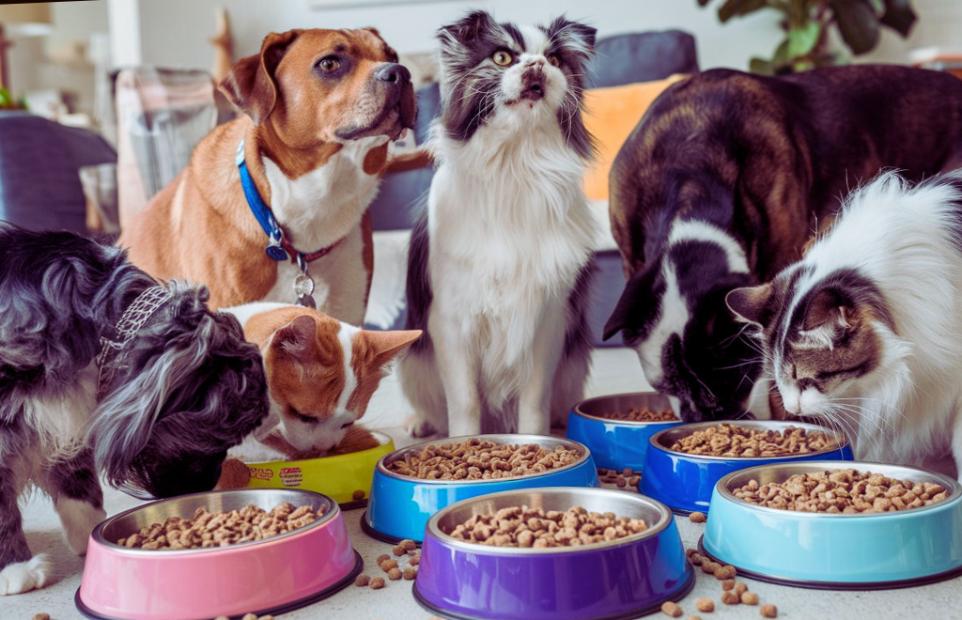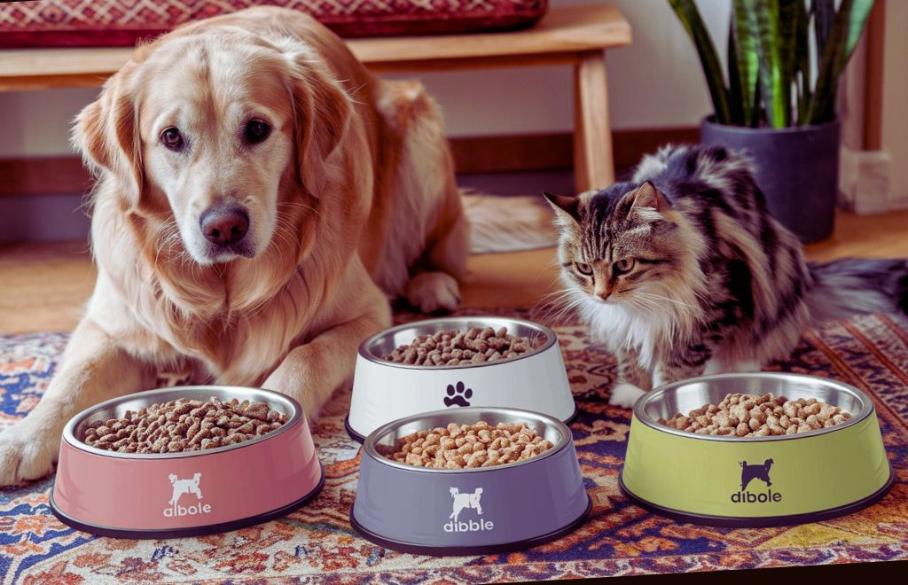Kibble surrounds us. In pet bowls all around the globe. Many pet lovers enjoy it. You can use it easily. It seems like pets enjoy it. Still, is kibble all it’s made up to be?
Let’s explore some startling kibble statistics now. These realities might affect how you feed your pet. Not here to terrify you, so relax. We wish to guide you in wise pet decision-making.
Consider what your pet eats. Ever wonder what actually is in it? Alternatively, how might it impact your pet’s health? It is time to learn.
Here we will expose seven startling facts about kibble. Some people might surprise you. Others would cause you to consider your pet’s diet twice. All of these will, nonetheless, assist you to be a better pet owner.
We’ll consider everything from how fresh kibble actually is to how it impacts your pet’s teeth. You’ll pick up quick repairs and hidden hazards. You’ll know more about kibble by the end than most pet owners.
All set to change your pet’s food? Let’s start right now and investigate some startling kibble facts. Well worth it are the health and happiness of your pet!
What is Kibble?
Often seen in pet dishes, kibble are the little, dry particles of food. Dogs and cats are meant to consume it every day. It appeals to people because it’s long-lasting and simple to use.
How It’s Made:
- One combines ingredients.
- The mix is done.
- It is formed in little bits.
- The bits dry and are packed.
Types of Kibble:
- Dog kitty
- Cat kitties
- kibble for puppies or kittens
- Special diet kibble
It can take many distinct forms. Some seem to be little balls. Others might be fashioned like triangles or stars. As dogs eat, the shape can assist clean their teeth.
Many pet owners choose kibble because:
- It’s easy to store
- You have all day to leave it out.
- It’s not as messy than wet food.
- It usually comes less expensive than other pet foods.
It is not flawless, though. Certain kinds might not be the ideal for every pet. One should so benefit from knowing more about it.
Understanding it helps you choose the meal for your pet better. Many pets’ diets heavily consist on this, thus it’s important to know!

7 Shocking Truths About Kibble
Many homes with pets rely mostly on kibble. Pets seem to like it; it’s handy, reasonably priced. Still, it is more than what first greets the eye. Let us investigate some startling information that might alter your perspective on this popular pet food.
1.The Freshness Fallacy: Kibble’s Hidden Expiration Date
Many of pet owners think kibble keeps for months. False is what this is not! The clock runs once you open a kibble bag.
Why Freshness Matters:
- Kibble’s nutrients break down with time.
- Fats can go rancid, sickening pets.
- Stale kibble tastes and looks bad.
Kibble Tips:
- Use within 4-6 weeks of opening
- Store in an airtight container.
- Store somewhere cool and dry.
Let old kibble not compromise the health of your pet. Fresh is ideal!
2. The Thirst Trap: How Kibble Affects Hydration
After meals, have you seen your pet buddy gassing down water? One could find the offender Kibble. Pets can get dehydrated with this dry food.
Kibble and Thirst:
- Extraordinarily low moisture content
- Makes dogs consume more to break down.
- Might cause either dehydration or bloating.
Hydration Helpers:
- Add water to kibble before presenting it.
- Add to some wet cuisine.
- Always keep fresh water available.
Maintaining your pet’s hydration will help to improve its health and happiness.
3. Quality Matters: Not All Kibble is Created Equal
Walking along the pet food section will reveal a variety of kibble. But they are not all the same. Brand to brand variations in quality can be really different.
Spotting Good Kibble
- Meat mentioned as the first component
- Not one artificial color or taste.
- enhanced minerals and vitamins
Red Flags in Kibble:
- Many fillers like wheat or corn.
- Main constituents are byproducts.
- Artificial preservatives
Make wise decisions; the condition of your pet depends on them!
4, The Carb Confundrum: Is Your Pet Getting Too Much?
Many people are unaware that kibble frequently boasts too high a carbohydrate count. Pets, particularly cats, have no need of a high-carb diet.
Carb Concerns:
- Can lead to weight gain
- Perhaps raise the risk of diabetes.
- Might lead to energy crashes and spikes.
Balancing Act:
- Look for low-carb kibble options
- Mix kibble with fresh protein sources
- Consider grain-free varieties (but talk to your vet first)
Your pet stays active and healthy from a balanced diet!
5. Moisture Matters: The Dry Food Dilemma
While kibble is handy, it lacks something really vital: moisture. Over time this can cause health problems.
Why Moisture Matters:
- Promotes digestion.
- Supports the health of the urinary system
- Maintains pets in fullness.
Adding Moisture:
- Mix water into kibble
- Incorporate moist foods into meals.
- Try homemade broths (without onions or garlic!).
Keeping your pet healthy mostly depends on a small amount of moisture.
6. Allergies and Sensitivities: When Kibble Causes Problems
Some dogs find some kibble additives intolerable. Food sensitivity or allergies can follow from this.
Signs of Kibble Troubles:
- Rough skin or too much scratching
- Bad stomach or vomiting
- Redness in the ears or infections there
What to Do:
- Try low ingredient kibble.
- Change to a different source of proteins.
- Take into account a grain-free choice.
- See your veterinarian always before major adjustments.
Pay close attention to the body of your pet; it may be speaking to you.
7. Dental Dilemma: The Truth About Kibble and Teeth
Many think kibble keeps teeth clean. But it’s not that straightforward. Certain varieties of kibble can really compromise dental health.
Kibble and Teeth:
- A few kbits can cling to teeth.
- Could help with plaque development.
- Not every kibble has teeth-saving properties.
Dental Health Tips:
- Select kibble specific to teeth.
- Regular brushing of your pet’s teeth is essential.
- Give treats—dental chews.
A happy pet results from a healthy mouth!
Conclusion: Finding Balance in Your Pet’s Diet
Kibble’s news isn’t all terrible. When selected sensibly, it can fit a good diet. Variance and balance are the secret.
- Smart Kibble Strategies:
- Combine fresh items with kibble-food.
- Turn around several varieties of premium kibble.
- Add water to dishes.
- Look for dietary sensitivity indicators.
- Frequent veterinarian visits allow one to track health.
Remember, every pet is different. One’s solution may not be the one another finds effective. Consider the wants and tastes of your animal friend.
Knowing these realities regarding this pet food will help you choose better for your pet. For years to come, a well-fed pet makes a content, healthy friend!
FAQs:
Can I mix different brands of kibble?
Sure, but proceed gently. Unexpected changes might cause stomachs to rebel. Increase over time mix some of the new kibble with the old.
How much kibble should I feed my pet?
Your pet’s size, age, and degree of activity will all determine this. Review the package policies and modify depending on the requirements of your pet. Your veterinarian may also assist.
Is grain-free kibble always better?
Not generally. Certain animals thrive on grains. See your veterinarian about what would be best for your particular pet.
Can kibble go bad if left out?
Definitely! This food can grow bacteria and take up moisture. Leave it out for no longer than one day.
Should I warm up kibble?
A few dogs like warm food. It can have broth or warm water added. Just watch that it’s not very hot!

